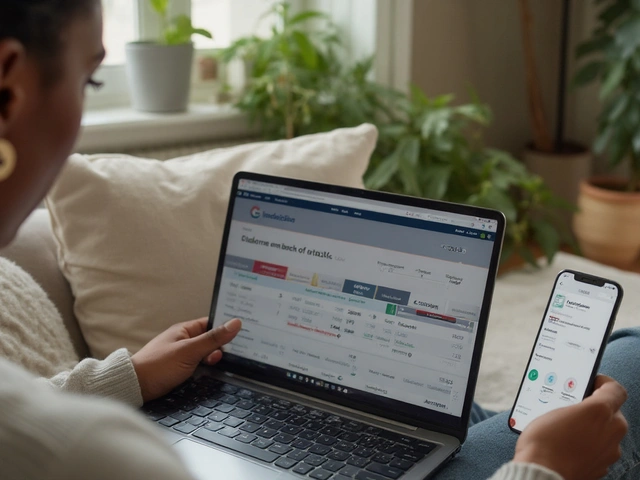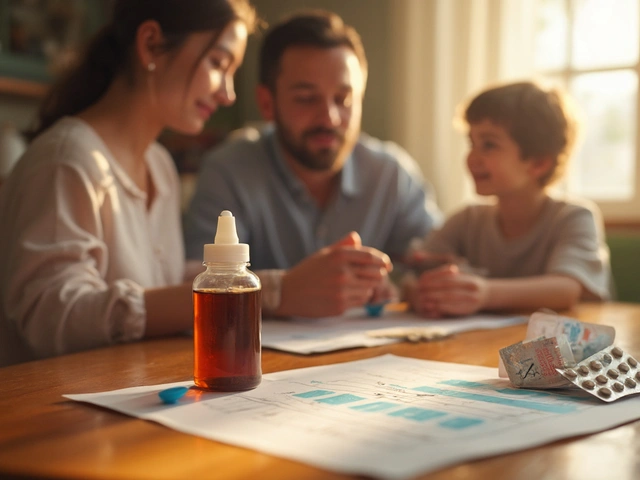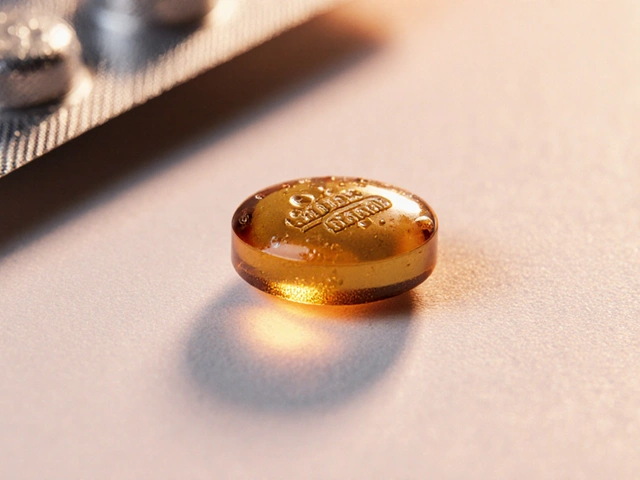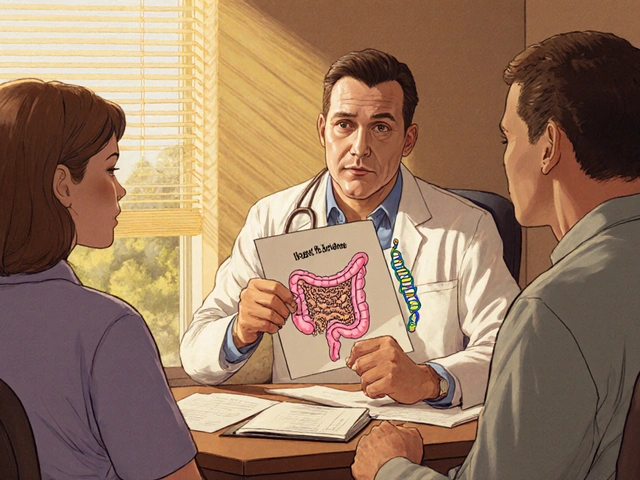Vitamin D & Statin Tolerance Assessment Tool
Vitamin D Level Assessment
Enter your vitamin D level in ng/mL to see how it affects statin tolerance
For millions of people taking statins to lower cholesterol and prevent heart attacks, muscle pain isn’t just an inconvenience-it’s a dealbreaker. About 7 to 29% of patients stop taking statins because of muscle aches, weakness, or cramps. And for years, doctors have wondered: could low vitamin D be the hidden culprit?
The idea sounds simple. Vitamin D helps your muscles work right. Statins can mess with muscle cells. So if you’re low in vitamin D, maybe your muscles are extra sensitive to statins. It’s a theory that gained traction after a 2009 study found that 92% of patients with statin-related muscle pain felt better after taking vitamin D supplements. That got a lot of attention. Clinicians started checking vitamin D levels. Some even began supplementing before re-prescribing statins. But is this actually backed by science-or just wishful thinking?
What the observational studies showed
Early research painted a compelling picture. A 2017 study in the Journal of Clinical Lipidology looked at 100 patients who had quit statins due to muscle symptoms. Nearly all of them had vitamin D levels below 20 ng/mL-officially deficient. After giving them 2,000 to 4,000 IU of vitamin D daily for 2 to 3 months, 90% of those with severe deficiency (≤20 ng/mL) were able to restart statins without pain. That’s a huge number. For patients whose vitamin D was already above 20 ng/mL, only 33% tolerated statins after supplementation. The difference was statistically significant.
Another small study from 2015 found that 53% of patients who had failed multiple statins could tolerate at least one after getting their vitamin D above 30 ng/mL. The researchers didn’t just see symptom relief-they saw real-world adherence improve. Patients who had given up on statins returned to therapy, often switching to pravastatin or rosuvastatin, which seemed better tolerated after correction.
There’s also a biological angle. Vitamin D helps regulate calcium in muscle cells. Low levels can cause muscle weakness on their own. Some experts believe low vitamin D makes muscle cells more vulnerable to statin-induced damage. Statins are metabolized by liver enzymes (CYP450), and vitamin D deficiency might slow down how those enzymes work, leading to higher statin levels in the blood. That could mean more muscle exposure to the drug, increasing side effects.
The big twist: the randomized trial that changed everything
In 2022, the JAMA Cardiology study dropped a bombshell. This wasn’t a small, observational study. It was a randomized, double-blind, placebo-controlled trial involving over 2,000 people who were just starting statins. Half got 2,000 IU of vitamin D daily. The other half got a dummy pill. After two years, the results were identical: 31% of people in both groups developed muscle symptoms. 13% stopped their statins in each group. No difference.
This is the gold standard of medical evidence. It controls for placebo effects, lifestyle changes, and other variables. It didn’t just find no benefit-it found zero benefit. The authors concluded clearly: vitamin D supplementation doesn’t prevent statin-related muscle pain.
So why did earlier studies show such strong results? The answer might be bias. In observational studies, patients who take vitamin D supplements might also be more health-conscious overall. They might eat better, exercise more, or see their doctor more often. When their muscle pain improves after starting vitamin D, it’s easy to assume the supplement worked-but maybe it was the lifestyle changes, or just the placebo effect. Muscle pain from statins is subjective. There’s no blood test or scan that confirms it. People feel it, report it, and often feel better when they think something’s being done.

What about statin type and vitamin D levels?
One study from 2019 found something surprising: patients taking atorvastatin had higher vitamin D levels than those on other statins. That doesn’t make sense if statins lower vitamin D. Instead, the researchers suggested the opposite-that statins might actually raise vitamin D levels. Maybe statins affect how vitamin D is processed in the body. Or maybe people with higher vitamin D are simply more likely to be prescribed statins because they’re healthier. The direction of this link is still unclear.
Another interesting finding: among patients who had muscle pain before, pravastatin and rosuvastatin were the most tolerated after vitamin D correction. Pravastatin is less metabolized by liver enzymes, so it might be less likely to build up in the blood. Rosuvastatin, while strong, has a clean safety profile in muscles. These two might be the safest bets if you’ve had trouble with other statins-even if vitamin D isn’t the cause.
Should you get your vitamin D checked?
Here’s the practical bottom line. If you’re on a statin and have muscle pain, don’t assume vitamin D is the problem. But don’t ignore it either.
- If your vitamin D is below 20 ng/mL, supplementing is a low-risk move. Even if it doesn’t fix your statin tolerance, fixing a deficiency helps your bones, immune system, and overall muscle function.
- If your level is above 30 ng/mL, supplementing won’t help your muscle pain. You’re not deficient. More vitamin D won’t make you feel better.
- If you’ve failed multiple statins, try switching to pravastatin or rosuvastatin. These tend to be better tolerated, regardless of vitamin D.
- Don’t stop your statin without talking to your doctor. The cardiovascular benefits are real. Statins reduce heart attacks and strokes by 25-35% in high-risk patients.
Some doctors still check vitamin D because they’ve seen patients respond. That’s not nothing. But the science now says it’s not a reliable fix. The placebo effect is powerful. If you feel better after taking vitamin D, that’s real to you. But it’s not proof it’s working on the muscle damage caused by statins.

What’s next for research?
The 2022 JAMA study doesn’t end the conversation-it just shifts it. Maybe vitamin D helps only in extreme deficiency. Maybe it works for a small subgroup we haven’t identified yet. Maybe the timing matters: supplementing before starting statins versus after symptoms appear. Future studies need to focus on people with very low vitamin D (<15 ng/mL) and track muscle enzymes, not just symptoms.
For now, the best advice is simple: treat vitamin D deficiency because it’s good for you-not because you think it’ll save your statin therapy. If muscle pain continues, talk to your doctor about switching statins, lowering the dose, or trying a non-statin option like ezetimibe or PCSK9 inhibitors. There are other tools. You don’t have to suffer through side effects to protect your heart.
Bottom line
Vitamin D deficiency is common. Statin intolerance is common. But the link between them? Not as strong as we thought. The early studies were hopeful. The big trial was clear: vitamin D supplements won’t stop muscle pain from statins. That doesn’t mean you shouldn’t take vitamin D if you’re low. It just means you shouldn’t take it hoping it’ll fix your statin problem. The real solution lies in smarter statin choices, better dosing, and honest conversations with your doctor-not in a bottle of pills.
Can low vitamin D cause muscle pain from statins?
Low vitamin D can cause muscle weakness on its own, and some people with both low vitamin D and statin use report more muscle pain. But large, high-quality studies show vitamin D deficiency doesn’t directly cause statin-related muscle symptoms. The association seen in early studies was likely due to other factors like lifestyle or placebo effects.
Should I take vitamin D if I can’t tolerate statins?
If your vitamin D level is below 20 ng/mL, taking a supplement (1,000-4,000 IU daily) is safe and may help your overall muscle health. But don’t expect it to make statins tolerable. If your level is normal or high, taking extra vitamin D won’t help and could even be harmful over time.
Which statins are easiest to tolerate after muscle pain?
Pravastatin and rosuvastatin are generally better tolerated by people who’ve had muscle side effects with other statins. Pravastatin is less dependent on liver enzymes that can be affected by vitamin D or genetics, and rosuvastatin has a lower risk of muscle toxicity even at higher doses. Switching to one of these is often more effective than adding vitamin D.
How much vitamin D should I take if I’m deficient?
For deficiency (below 20 ng/mL), most doctors recommend 2,000 to 4,000 IU of vitamin D3 daily for 8 to 12 weeks, then retesting. After levels normalize, a maintenance dose of 600-1,000 IU daily is usually enough. Never exceed 4,000 IU daily without medical supervision, as too much can cause high calcium levels and kidney problems.
Is it safe to restart statins after stopping due to muscle pain?
Yes, but do it carefully. Restarting statins after muscle pain should be done under medical supervision. Start with a low dose of a different statin (like pravastatin or rosuvastatin), and monitor for symptoms. Muscle enzyme tests (CK levels) can help rule out serious damage. Most people can tolerate statins again with the right approach.
If you’re struggling with statin side effects, don’t give up. There are options. Talk to your doctor about alternatives, dosing schedules, or non-statin therapies. Your heart health is too important to leave to guesswork.






Comments
Linda Rosie
21/Nov/2025My doctor checked my D levels when I had statin pain. Turned out I was severely deficient. Took supplements, pain went away. Doesn’t mean it works for everyone, but it worked for me.
Vivian C Martinez
21/Nov/2025It’s frustrating when science contradicts real-life experience. I’ve seen patients thrive after fixing vitamin D - even if the RCT says otherwise. Medicine isn’t always about averages. It’s about individuals.
Ross Ruprecht
21/Nov/2025So let me get this straight - we spent 15 years chasing a ghost because some doc saw a 90% success rate in 100 people? Classic.
Bryson Carroll
21/Nov/2025Of course the JAMA study killed it - because real science doesn’t care about your anecdotal relief or your supplement hustle. You think your ‘feeling better’ means anything? Wake up. The placebo isn’t a cure - it’s a distraction from real treatment
Lisa Lee
21/Nov/2025Canada’s been doing this right for years. We don’t waste time on placebo medicine. If your D is low, fix it. If it’s not, stop blaming supplements. Simple.
Jennifer Shannon
21/Nov/2025You know, it’s kind of beautiful - and also heartbreaking - how deeply we want to believe in simple solutions. We want vitamin D to be the magic key that unlocks statin tolerance, because it feels fair, it feels natural, it feels like we have control. But the body doesn’t care about our narratives. The body only cares about what the data says. And the data says: no magic key. Just careful choices, better statins, and maybe a little sunlight.
Still, I get why people cling to it. We’re not just treating cholesterol - we’re treating fear. Fear of heart attacks. Fear of pills. Fear of aging. And sometimes, a pill that feels like ‘nature’s remedy’ is the only thing that lets us breathe again.
So maybe the real question isn’t whether vitamin D works - it’s why we needed it to work so badly.
Suzan Wanjiru
21/Nov/2025Pravastatin and rosuvastatin are the real MVPs here. I’ve had patients who couldn’t tolerate atorvastatin or simvastatin for years - switch them to prava, and boom, no pain. Vitamin D? Maybe helps if you’re deficient, but the statin type matters way more.
Demi-Louise Brown
21/Nov/2025Don’t stop your statin. The data on heart attack reduction is overwhelming. If muscle pain is an issue, work with your doctor. Test vitamin D. Try a different statin. But don’t let fear override evidence.
Matthew Mahar
21/Nov/2025Okay but what if the RCT was flawed? What if everyone in the vitamin D group was already taking it from their multivitamin and didn't report it? I mean... the study didn't even measure baseline levels properly. I'm not saying the results are wrong... but i'm not convinced either
John Mackaill
21/Nov/2025I’ve had patients with levels under 12 ng/mL who felt like new people after supplementation - muscle pain gone, energy up. That’s not placebo. That’s biology. The RCT might not capture that subgroup. We need more targeted studies.
Adrian Rios
21/Nov/2025Let’s not throw the baby out with the bathwater. The 2022 RCT is huge - no doubt. But it doesn’t invalidate everything before it. Observational data still matters, especially when it’s consistent across multiple small studies. Maybe vitamin D doesn’t help everyone - but maybe it helps the severely deficient. And those people exist. They’re not just ‘anecdotes.’ They’re people who couldn’t take their lifesaving meds until they got their D up. That’s not nothing.
Also, pravastatin and rosuvastatin are underrated. If you’ve had muscle pain with other statins, those two are your best friends. I’ve seen it over and over. The liver metabolism difference is real. Vitamin D might be a red herring - but switching statins? That’s actionable.
Casper van Hoof
21/Nov/2025The epistemological tension here is fascinating: the tension between phenomenological experience and statistical generalization. One may experience relief through vitamin D supplementation - a subjective truth - while the population-level data negates its causal efficacy. This is not a contradiction, but rather a divergence between the hermeneutic and the positivist paradigms in medical epistemology.
Richard Wöhrl
21/Nov/2025Important note: the 2022 JAMA trial used 2,000 IU daily - but many patients in earlier studies were taking 4,000–5,000 IU. Also, they didn’t stratify by baseline levels - so people with normal D were getting supplements too. That could’ve diluted any effect. And the trial lasted two years - but muscle symptoms often appear in the first 3–6 months. Maybe the window matters.
Also - the 2019 study showing atorvastatin users had higher D levels? That’s wild. Could statins actually increase D? Or is it just that healthier people get prescribed stronger statins - and those people also get more sun, eat better, take supplements? Correlation ≠ causation - but it’s still worth digging into.
Bottom line: if your D is below 20, take it. It won’t hurt. If you’re still having pain, try pravastatin or rosuvastatin. And if you’re still struggling? Talk to your doctor about non-statin options - ezetimibe, PCSK9 inhibitors - they’re not perfect, but they work. Don’t give up on prevention.